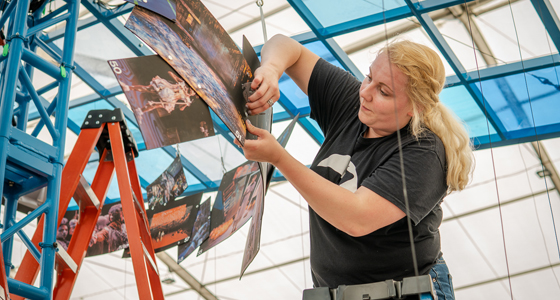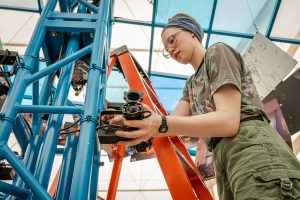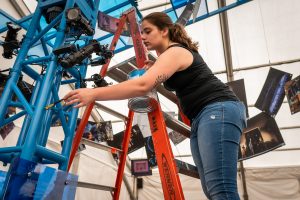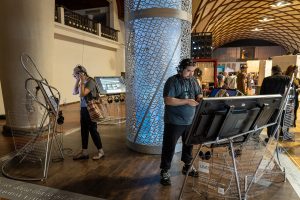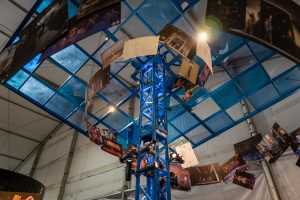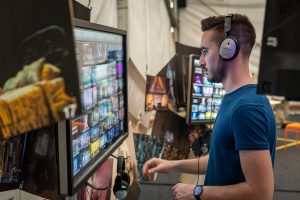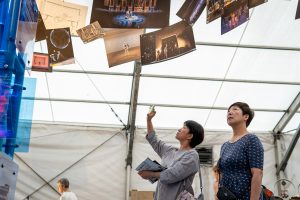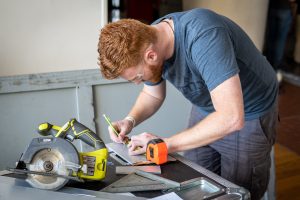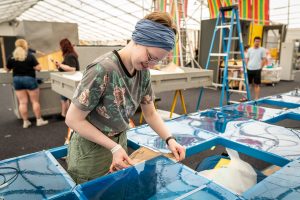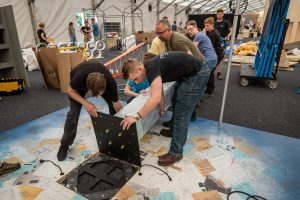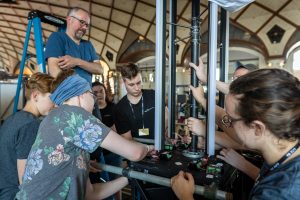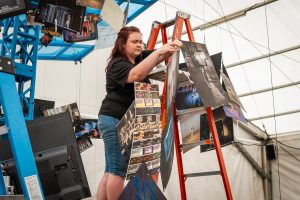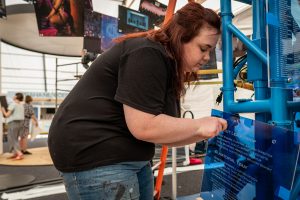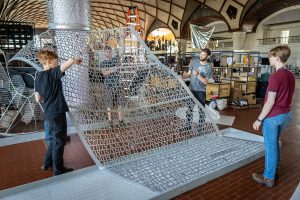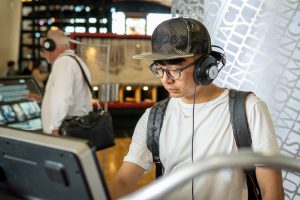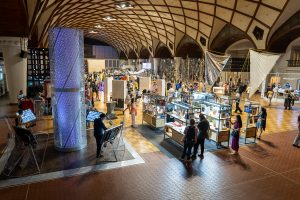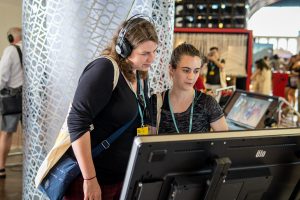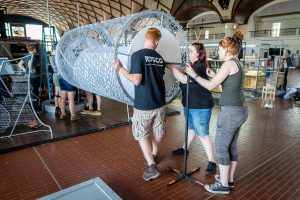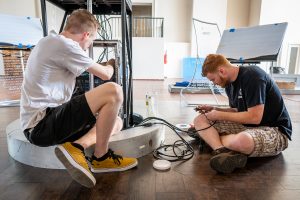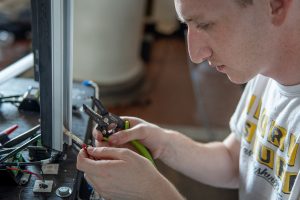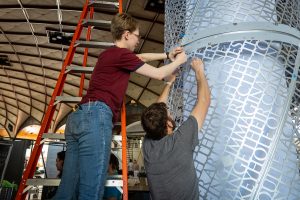The Prague Quadrennial (PQ) 2019 is officially underway! The design team and the build team from the University at Buffalo (UB) have been hard at work the past few days building and setting up both the U.S. emerging artists and professional exhibits at the Industrial Palace in Prague. USITT has been proud to sponsor the U.S. exhibition at the PQ for more than 40 years.
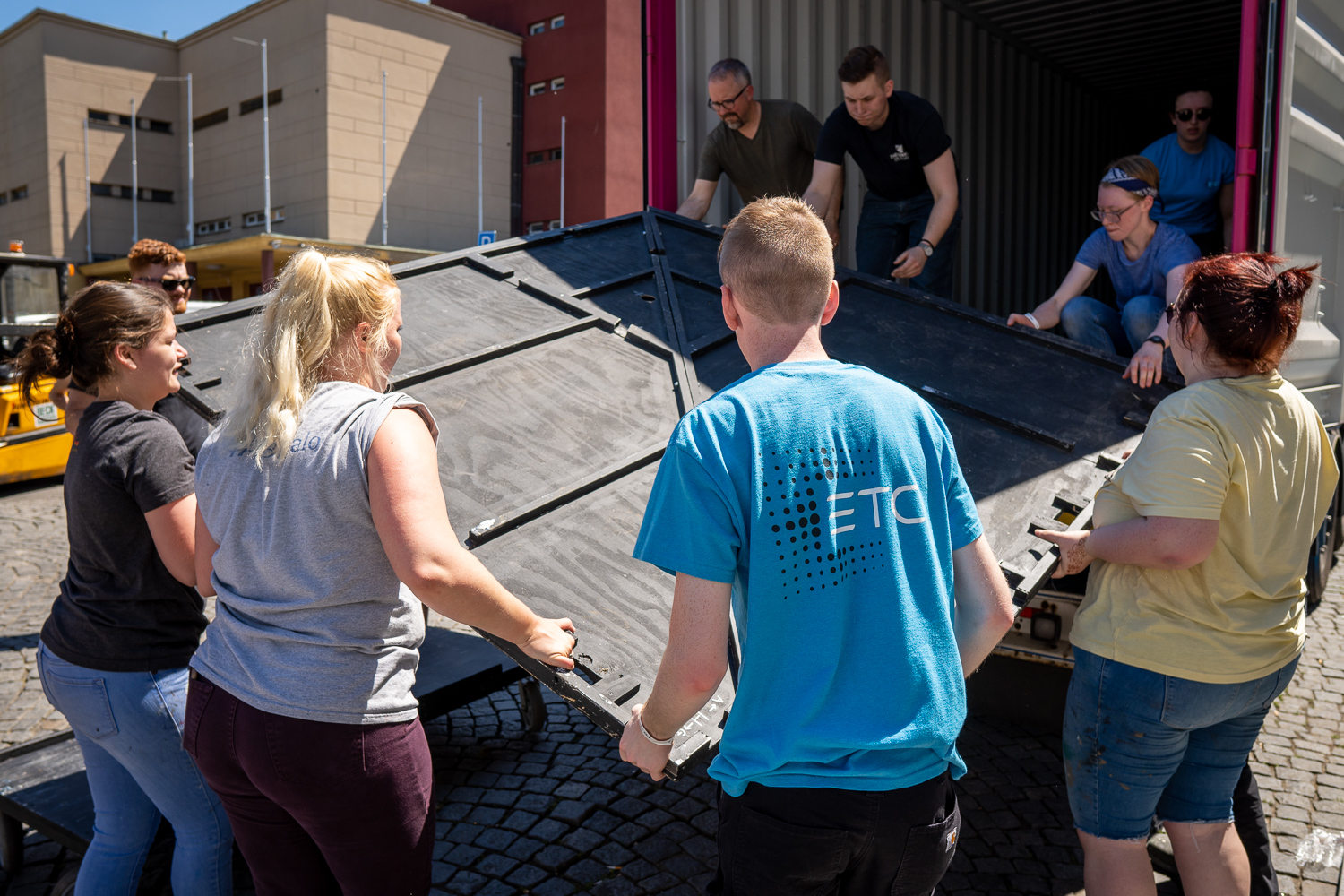 The Prague Quadrennial is the largest performance design event in the world; it is often described as the Olympics or world’s fair for performance designers. This international exhibition of design and technology features the work of professional designers as well as students and theatre architects from around the world.
The Prague Quadrennial is the largest performance design event in the world; it is often described as the Olympics or world’s fair for performance designers. This international exhibition of design and technology features the work of professional designers as well as students and theatre architects from around the world.
By exhibiting thousands of designs from dozens of countries, and by bringing together designers, directors, students, and the general public, the PQ provides an unprecedented exchange of ideas that goes well beyond the narrow confines of theatrical design and style.
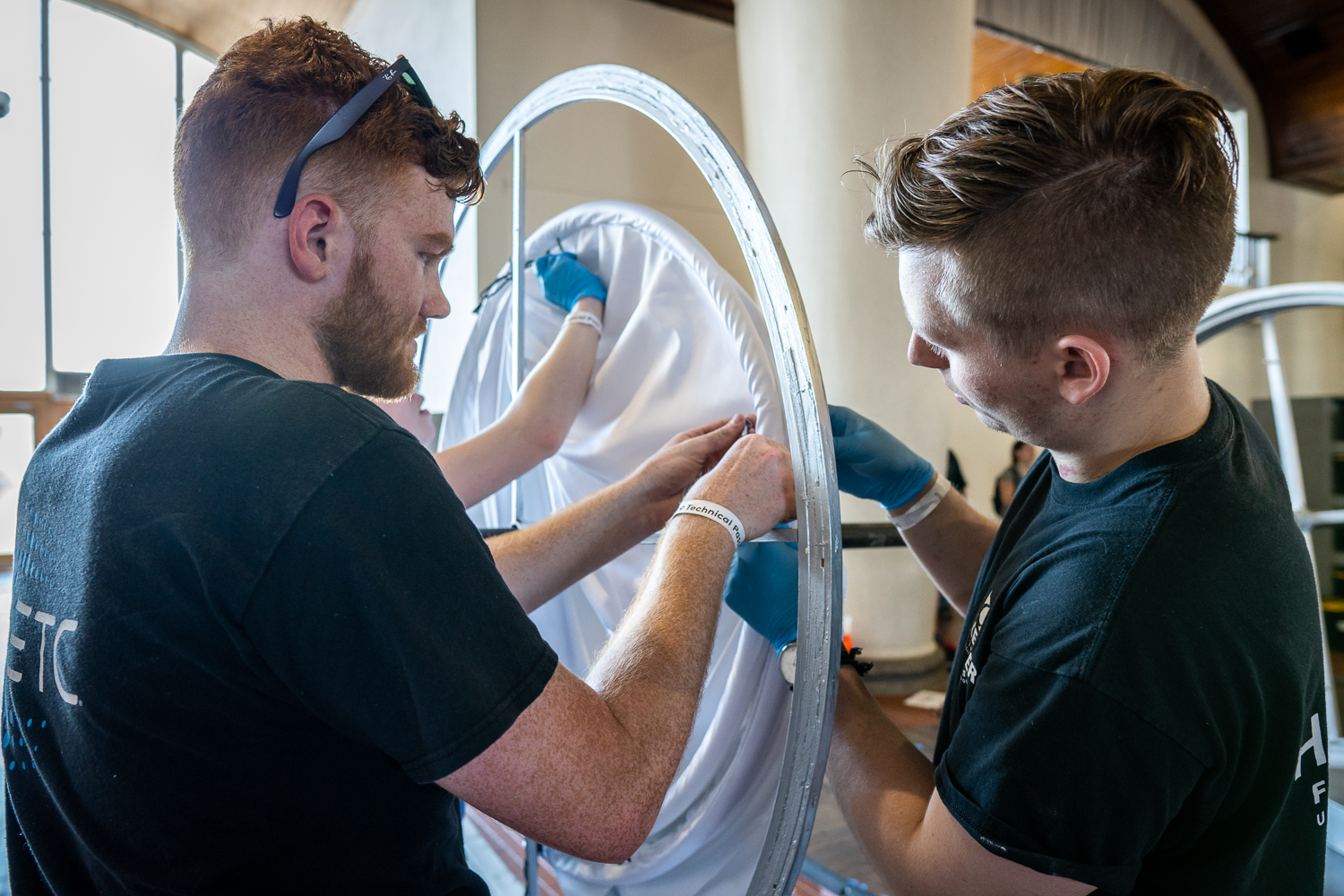 Jonathan Shimon, assistant professor in UB’s Department of Theatre and Dance and technical director of the U.S. entry, and Dyan Burlingame, company manager, charge scenic artist, clinical assistant professor, and director of the Design and Technology Program sat down with us in Louisville to discuss the concepts and implimentation of both exhibits and what the process was like.
Jonathan Shimon, assistant professor in UB’s Department of Theatre and Dance and technical director of the U.S. entry, and Dyan Burlingame, company manager, charge scenic artist, clinical assistant professor, and director of the Design and Technology Program sat down with us in Louisville to discuss the concepts and implimentation of both exhibits and what the process was like.
“The theme and biggest part of this is Porous Borders,” Burlingame said. “It was the theme that the designers were looking to design towards without being too political but while also being political. The teams have decided to place the U.S. exhibits adjacent to Mexico and Canada.”
The theme was absorbed by every aspect of the design and construction of the exhibits, even in how attendees would explore it.
“Having porous borders between those nations when there’s so much political strife over the borders right now has been really important to the entire team,” Burlingame said. “There was a lot of talk about how visitors can move through the exhibits and experience them while not impeding on adjacent exhibits and we all kept that in mind when we were thinking about seeing the evolution of the design.”
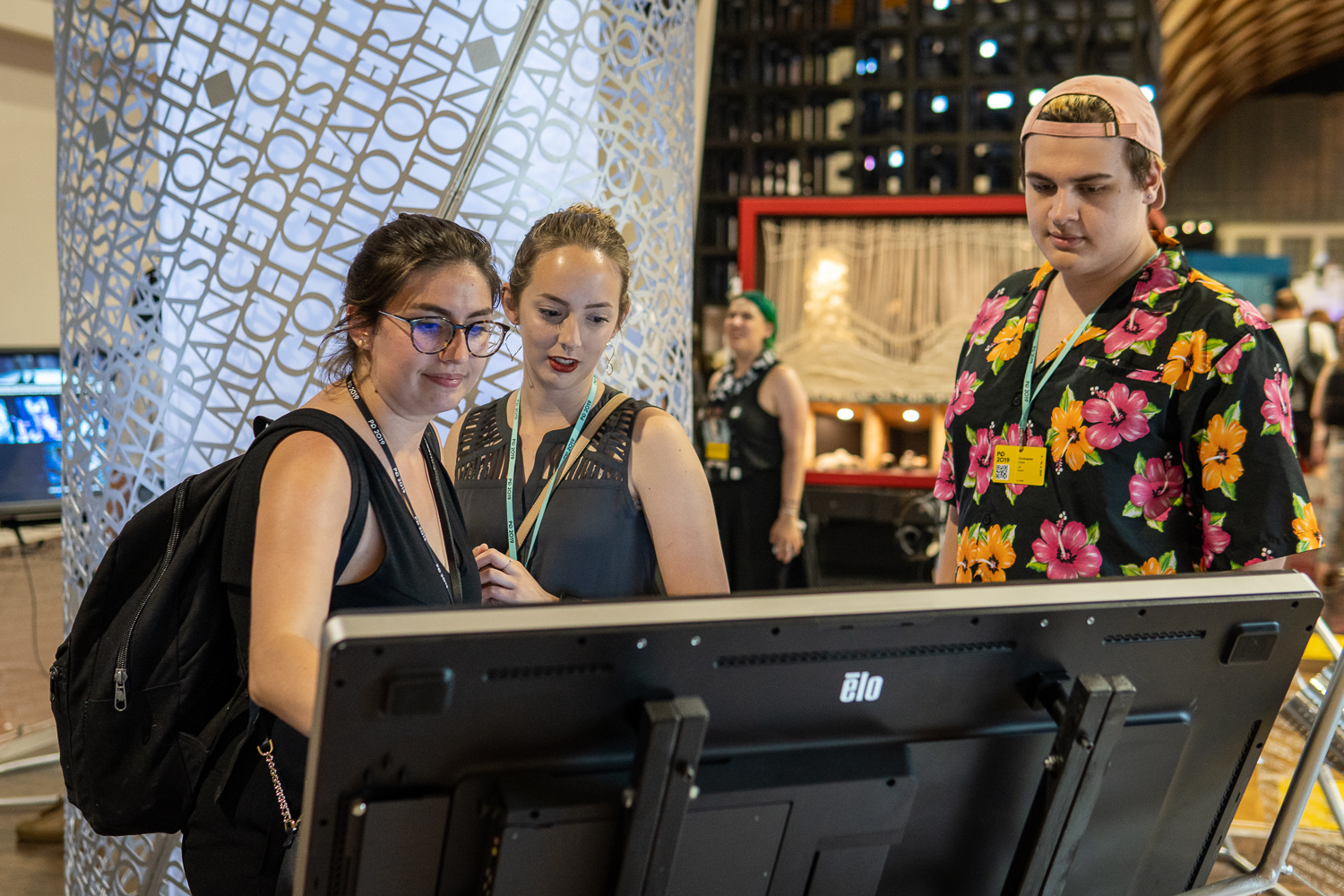 Shimon says the assistance of a National Endowment for the Arts (NEA) allowed the team to put money back into local Western New York businesses. “All of the TV screens and touchscreens came from a certified women-owned business in Buffalo, or just outside Buffalo. That was a little over $17,000, putting us right around $30,000 to local businesses in the Buffalo area.”
Shimon says the assistance of a National Endowment for the Arts (NEA) allowed the team to put money back into local Western New York businesses. “All of the TV screens and touchscreens came from a certified women-owned business in Buffalo, or just outside Buffalo. That was a little over $17,000, putting us right around $30,000 to local businesses in the Buffalo area.”
In addition to the NEA, additional generous support and in-kind contributions for this exhibit came from Figure 53, JR Clancy, Rose Brand, Gantom Lighting, ETC, Nicopress, Rosco, Applied Electronics, and others. The Institute is grateful for their support.
This year, to Shimon’s knowledge, was the first to see a team comprised primarily of undergraduate students. Of the nine members of the build team, only one is a master’s candidate, as UB does not have a theatre design master’s program. “It’s a real interdisciplinary group.”
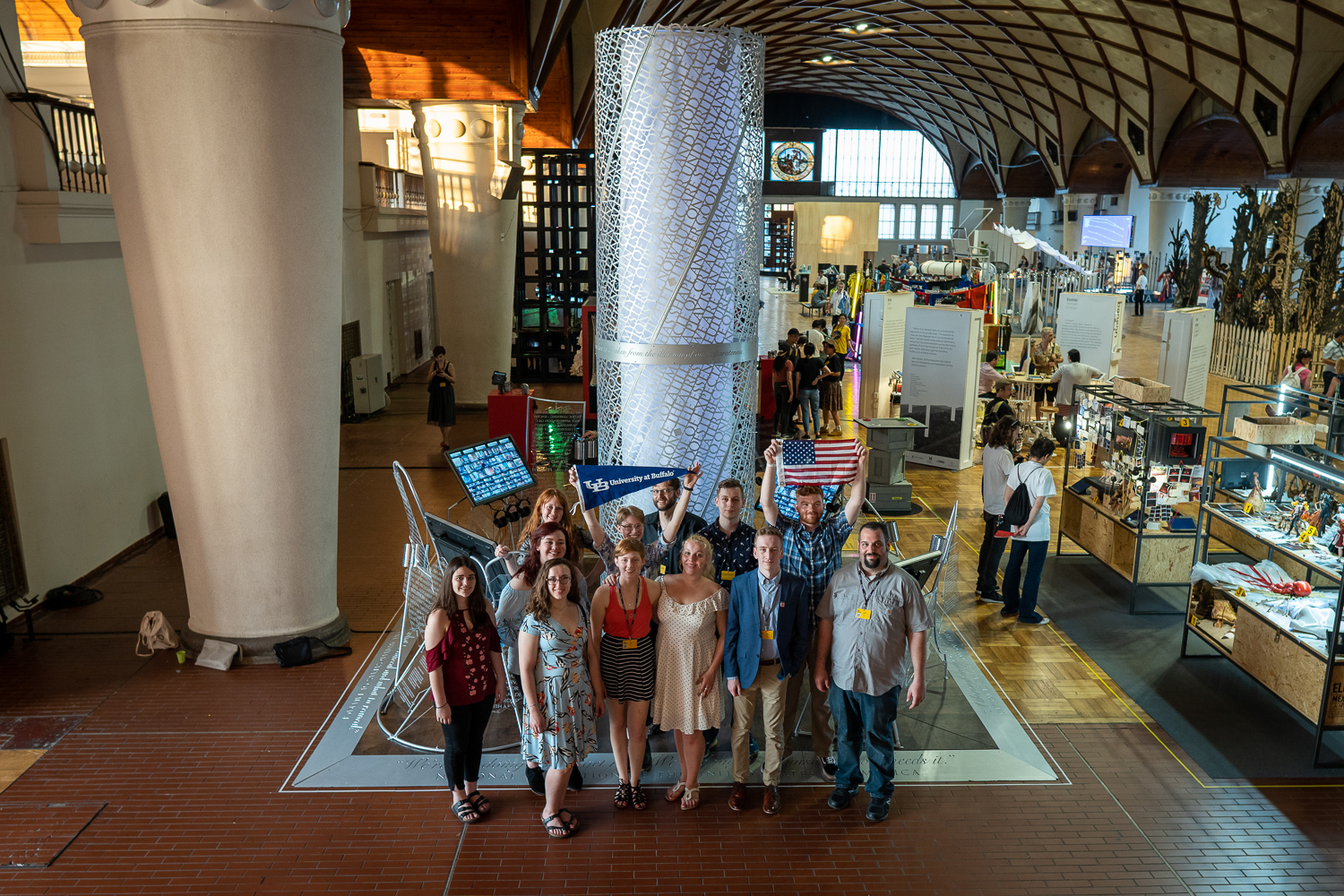 As the teams display their meticulous work at the 2019 PQ, Shimon can’t help but reflect on the journey thus far.
As the teams display their meticulous work at the 2019 PQ, Shimon can’t help but reflect on the journey thus far.
“The U.S. is so large geographically, diverse in so many ways, and that is reflected in the art that we make,” Shimon said. “Being able to take a look at the top scenography for our entire country for the past four years in one place — how else are you going to do that?”
Burlingame says, “It’s incredibly humbling and a huge honor to be able to be a part of something that’s representing the U.S. at large, with 75 other countries.”
USITT has been onsite the past week documenting everything from the load in to the build and installation. Now that the the largest performance design event in the world has kicked off, here are some shots from inside the Industrial Palace.
UB student members of the PQ Build Team
Gina Boccolucci, Joe Crumlish, Katherine Metzler, Alex Poulin, Emily Powrie, Aliza Schneider, Becca Stock, Madison Sullivan, and Luke Tarnow-Bulatowicz.
UB Faculty
Jonathan Shimon, Dyan Burlingame, John Rickus, Eric Burlingame, and Rick Haug.
All photos by David Armelino
